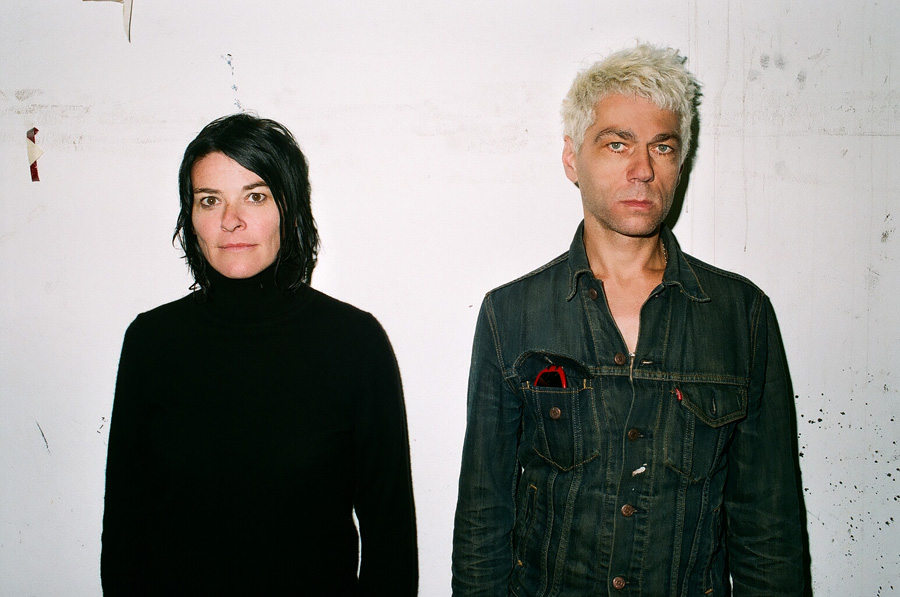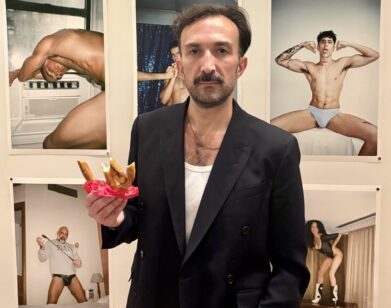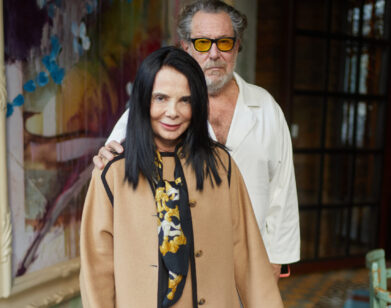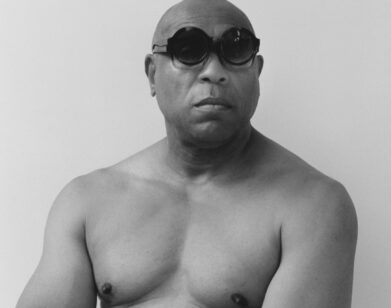Intimate Tricks: Tim Noble and Sue Webster

PORTRAIT BY MAXINE BALLESTEROS
A dead rat is not your conventional token of love. But Sue Webster and Tim Noble are an unconventional couple whose gilded monument to transcendence, Turning the Seventh Corner, is on view in Berlin’s new Blain/Southern Gallery thanks to a collaboration with architect David Adjaye and their family’s cats.
After consolidating the carcasses of frogs and rodents the three cats left in Noble’s mother’s cottage with mummified squirrels that a local farmer shot and mounted on a nearby fence, the Young British Artists cast the petrified corpses in silver, plated them with gold, and arranged them into one of their iconic shadow portraits. Since 1997, Noble and Webster have assembled refuse into piles that morph into remarkably eloquent self-portraits when light casts a shadow against a back wall. Turning the Seventh Corner is their first shadow sculpture in precious metal instead of delicate debris.
The installation is inspired by the pyramids, history’s most significant transformation of the raw power of flesh, another fleeting material, into permanence. For Webster and Noble, the animal bodies are less a memento mori than a means of giving the creatures an afterlife. “Although the base elements to the sculpture are dead,” Webster told Interview. “Once they are cast and put in this ball, they become perfectly alive again, if only in shadow.”
“They are hand-made,” Noble added, “So that intimacy really comes into the details. There is nothing manufactured about them. All that energy is just rolling around. Their spirits live again.”
Noble and Webster installed the twin masses of gold mummified critters, whose collective shadows create perfect portraits of the artists’ face-to-face profiles, within an inner sanctum accessed after seven turns through Adjaye’s intestinal black passageway. Adjaye’s structure winds mysteriously through the third floor of the Berlin branch of the London-based Blain/Southern gallery. Located in the stately space previous occupied by German Liberal newspaper Der Tagesspiegel‘s printing presses, the gallery is an impressive edifice. Yet despite the vast space, mysterious tunnels, dead animals and hidden treasure, the real power of “Turning the Seventh Corner” is its evocation of genuine intimacy.
“If you have a secret, people are always trying to unlock it,” says Noble, by way of the explaining the personal aspects of their art. Beside referencing their private lives together by incorporating evidence of their family cats’ devotion, Noble and Webster also wanted to commemorate their previous work with their close friend Adjaye on “Dirty House,” their studio and home. And Berlin itself holds a special place for Webster, who visited the city for her first independently planned trip with her father outside England. She remains riveted by the city’s impact on art and music, especially Bowie’s Berlin Trilogy and Nick Cave’s early relocation in West Berlin, although, as she ruefully observes, “Every year that I come back here, all the history keeps getting diminished.” “Even this block is getting tarted up,” Noble interjects—making their gold mummified rat an apt gift for Berlin.
TURNING THE SEVENTH CORNER IS ON VIEW AT BERLIN’S BLAIN/SOUTHERN GALLERY THROUGH JULY 16.






